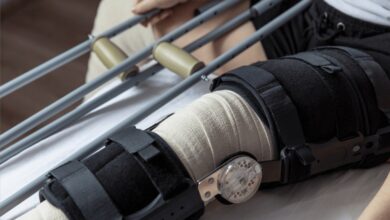The Essential Role of Emergency Medical Training in Community Safety
Emergency medical training empowers individuals to act effectively during crises. Investing in training programs can significantly enhance community resilience.

Key Takeaways:
- Emergency medical training empowers individuals to act effectively during crises.
- Investing in training programs can significantly enhance community resilience.
- Comprehensive training covers a range of life-saving techniques essential for public safety.
The Growing Need for Emergency Medical Training
In our rapidly moving world, accidents and medical emergencies can happen without warning, and the capacity to react swiftly and efficiently can be life-saving. Whether it’s a natural disaster or an abrupt health issue, having someone trained nearby can significantly impact the result. Basic first aid and CPR knowledge can empower people to act when immediate medical attention is needed before professional help arrives.
With the increasing awareness of the importance of timely medical intervention, more individuals seek to expand their skills. An Emergency Medical Responder Course Texas offers valuable training, equipping participants with critical knowledge to respond confidently in emergencies. Training is key in enhancing public health safety in the workplace, home, or community.
Key Components of a Comprehensive Training Program
A comprehensive training program includes several essential components to prepare for emergencies effectively. One of the most fundamental is Basic Life Support (BLS), which teaches participants how to maintain an open airway, support breathing and circulation, and perform cardiopulmonary resuscitation (CPR) when necessary.
Building upon these skills, Advanced Cardiac Life Support (ACLS) introduces more complex procedures, such as managing heart attack victims and conducting adequate resuscitation while coordinating with a team.
The Pediatric Emergency Assessment (PEARS) course focuses on the unique needs of infants and children, whose responses to medical interventions can differ significantly from those of adults. This training equips responders to recognize and manage pediatric emergencies quickly and effectively.
Lastly, the program includes training in Trauma Emergency Skills, which covers techniques for handling injuries resulting from severe accidents, such as car crashes or natural disasters. This training is crucial when rapid and accurate trauma response can be life-saving.
Benefits of Well-Trained Emergency Responders
Communities with well-trained emergency responders react swiftly and informally to crises, dramatically increasing survival and recovery rates. The presence of capable individuals during emergencies significantly reduces response time, as they can begin providing critical care long before professional medical teams arrive. In many situations, this immediate action can be the difference between life and death.
Moreover, having a cadre of trained non-professionals helps ease the burden on healthcare systems. During large-scale emergencies, medical resources can be stretched thin. Trained responders act as force multipliers, utilizing limited resources while ensuring that more severe cases receive priority attention from professional first responders.
How Communities Benefit from Local Training Initiatives
Local training initiatives promote a culture of preparedness and cooperation by customizing programs to meet regional challenges. These programs enhance a community’s readiness and response capabilities, fostering teamwork among local responders. These efforts strengthen trust and collaboration, leading to greater community resilience. Individuals gain confidence in emergency management, and residents feel safer knowing that trained responders are part of their community. This feeling of safety and community support is a key advantage of local emergency medical training programs.
Steps to Enroll in an Emergency Medical Training Program
- Researching Reputable Providers: Look for accredited programs with positive reviews and recognized certifications.
- Assess Program Offerings: Choose courses aligning with personal goals and community needs, ensuring a comprehensive skill set.
- Register and Commit: Select programs that fit your schedule. Consider flexible learning options like weekend classes or online modules if necessary.
- Engage in Continuous Learning: Training in emergency medical response is ongoing. Regularly update skills to stay abreast of the latest techniques and advances.
The Future of Emergency Medical Training
As technology advances, the future of emergency medical training promises to become increasingly interactive and practical. Techniques such as virtual reality (VR) simulations and augmented reality (AR) applications offer immersive learning experiences unparalleled by traditional methods. These innovations allow trainees to practice in realistic scenarios, enhancing their responsiveness and decision-making abilities in emergencies.
Continually adapting and integrating new technologies ensure that emergency medical responders remain effective and capable. As these tools become more widespread, they will elevate community readiness and safety standards globally, contributing positively to the field’s evolution and impact.











